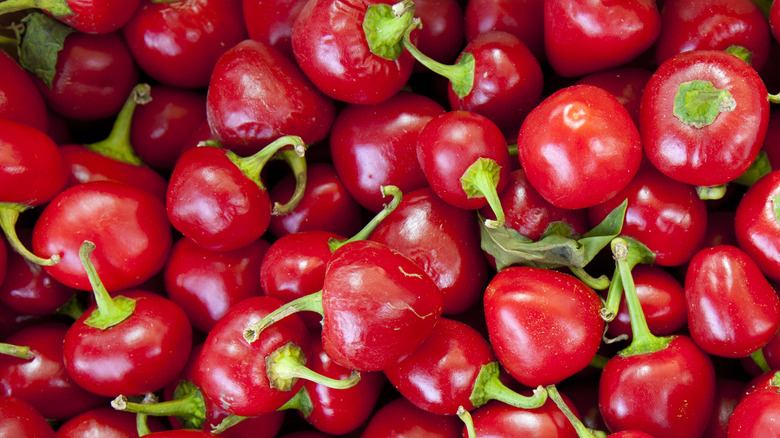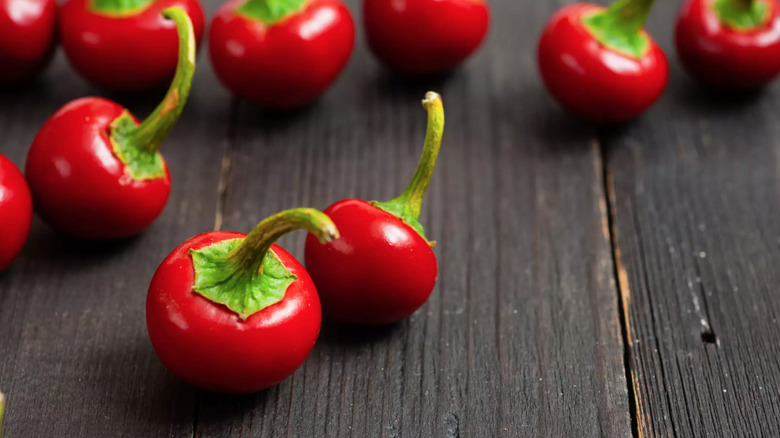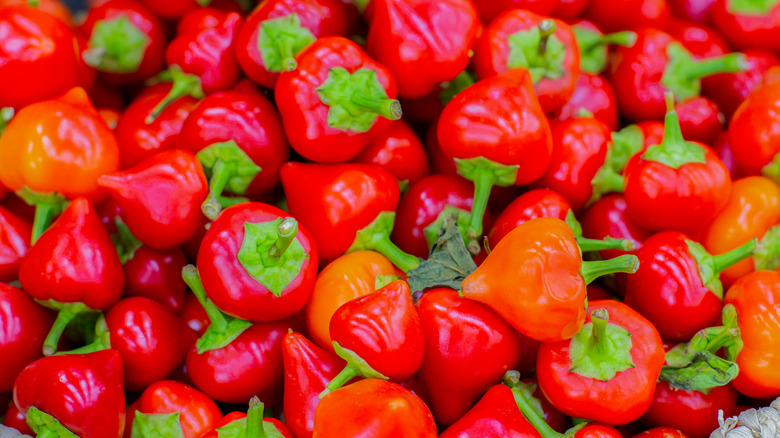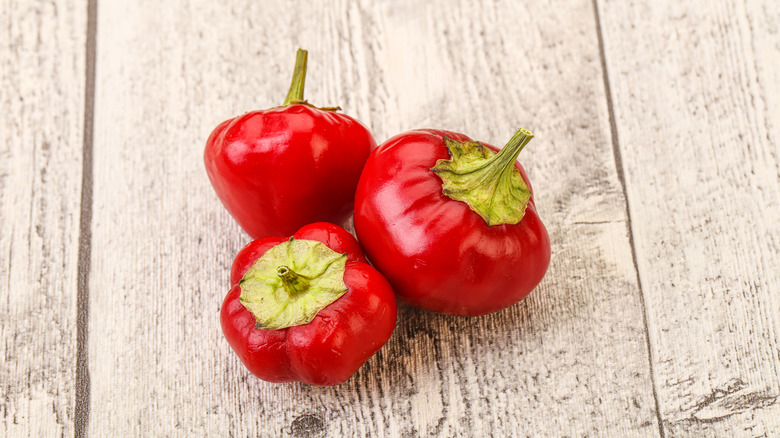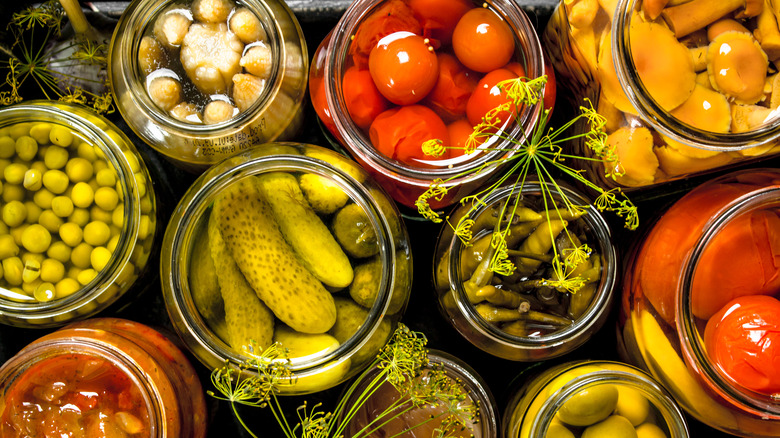What Are Cherry Peppers And How Spicy Are They?
Maybe you're someone who can't get enough spicy food in their life. The guy who always orders extra spicy Chinese, Thai, or Indian dishes, puts hot sauce on everything, and swears by the feeling of a sweaty upper lip or burning throat. Maybe you're the opposite, preferring to play it on the safe side and only eat something if you know it won't cause you the specific type of pain that the capsaicin in spicy foods can induce.
Regardless of where you fall on that spectrum, some kind of pepper is probably a regular part of your diet. If you're looking for another to try, one lesser-known member of the capsicum family is the cherry pepper (Capsicum frutescens). While often confused with the pimento pepper, this cherry-shaped flavor bomb has fiery qualities all of its own. Small and round, these teeny peppers are bursting with flavor and grow easily in many areas, first appearing green on the plant but slowly transforming into their distinctive bright red hues as they mature. Here's what to know before you work them into your recipe rotation.
What do cherry peppers taste like?
Similar to most peppers, cherry peppers have crisp and watery flesh with a bit of sweetness. Their heat level can vary based on growing conditions and other factors, ranging from no noticeable spice to a gentle tingle. Their median Scoville heat unit count is 3,750 with a maximum of 5,000, which is similar to a mild jalapeño but far less spicy than a cayenne pepper, explains Pepper Scale.
To be on the safe side, you can remove all the seeds before using a cherry pepper to help eliminate any spiciness that may be present. While the walls of these peppers are usually pretty juicy compared to other capsicums, the skin is typically a bit tougher, which is why they're so often pickled; they maintain a bit of their crunch even when preserved without being hard to chew. Despite their somewhat spicy flavor, they tend to be sweet and crisp, perfect for adding to a variety of dishes if you like a bit of heat and color.
Cherry peppers vs. pimentos
While cherry peppers look similar to, are often used in the same way as, and are frequently mistaken for pimento peppers, the two are not the same. Both peppers are small, bright red, and often pickled before being used for sandwiches, salads, and charcuterie boards, but their flavors are quite different, especially when it comes to heat level.
Pimentos are sweeter and less spicy than their cherry pepper relative, and they are heart-shaped rather than spherical. Despite their differences, the two varieties can mostly be used interchangeably in recipes. If you're ordering a salad, about to grab a pepper off of a cheese board, or putting peppers on a sandwich, just be sure you know whether it's a pimento or cherry pepper, particularly if you're sensitive to spicy foods. Cherry peppers can pack more heat with at least four times the Scoville heat units as pimentos (via Pepper Scale).
Nutritional information about cherry peppers
Like other peppers, cherry peppers are a healthy option to add to any diet (assuming you don't have an allergy or other restrictions that would prevent you from eating them). The low-calorie ingredient may help with weight loss since its heat can encourage slower-paced eating, suggests Livestrong, and has even been linked to lowering the risk of heart attack or stroke, found a study in the Journal of the American College of Cardiology. On top of that, cherry peppers (and all other varieties of peppers) are full of vitamins A and C, potassium, folic acid, and fiber (per WebMD).
Even better, if you're eating a hot pepper, you're eating capsaicin, which is the agent responsible for making peppers taste spicy. The tingle-inducing ingredient may help the body produce digestive fluids and fight infection-causing bacteria, which improves digestion, explains University of Michigan Health. Moreover, it is an antioxidant that protects cell health, and it may help move mucus out of the body when congested and even strengthen lung tissue.
Where to buy cherry peppers
Unlike more common pepper varieties, fresh cherry peppers can be a bit harder to track down, as their tough and fibrous skin makes them less popular to use raw. They are, however, more commonly found pickled to be used in sandwiches, salads, and condiments. Check out your local store's preserved-foods sections to find pickled cherry peppers in a jar. You could also have luck at grocery-store salad bars such as the ones at Whole Foods.
If you still want to try fresh cherry peppers, you may be best off heading to the farmer's market during the late summer and early fall. Once you're there, look for a producer that specializes in peppers and ask if they have any leads. From there, it's up to you to make homemade pickles, stuffed peppers, or an experimental dish that replaces another diced capsicum with these cherry-shaped flavor morsels.
